MASTERS THESIS: "Disclosional": Creating Conversation Around, In, and Outside HIV, by Heath Wagoner
Heath Wagoner’s master’s thesis, Disclosional: Creating Conversation Around, In, and Outside HIV, is built on the premise that "sometimes a conversation is not always enough. But in the case of HIV, it is imperative."
Encouraging honest conversation is the formative idea behind Disclosional. Its aim is to make talking about HIV easier, and to remove stigma by educating people around the topic. The thesis offerings were inspired by Heath's personal fears and experiences, the history of HIV, and the successful failures of designers and artists who have contributed to the HIV movement.
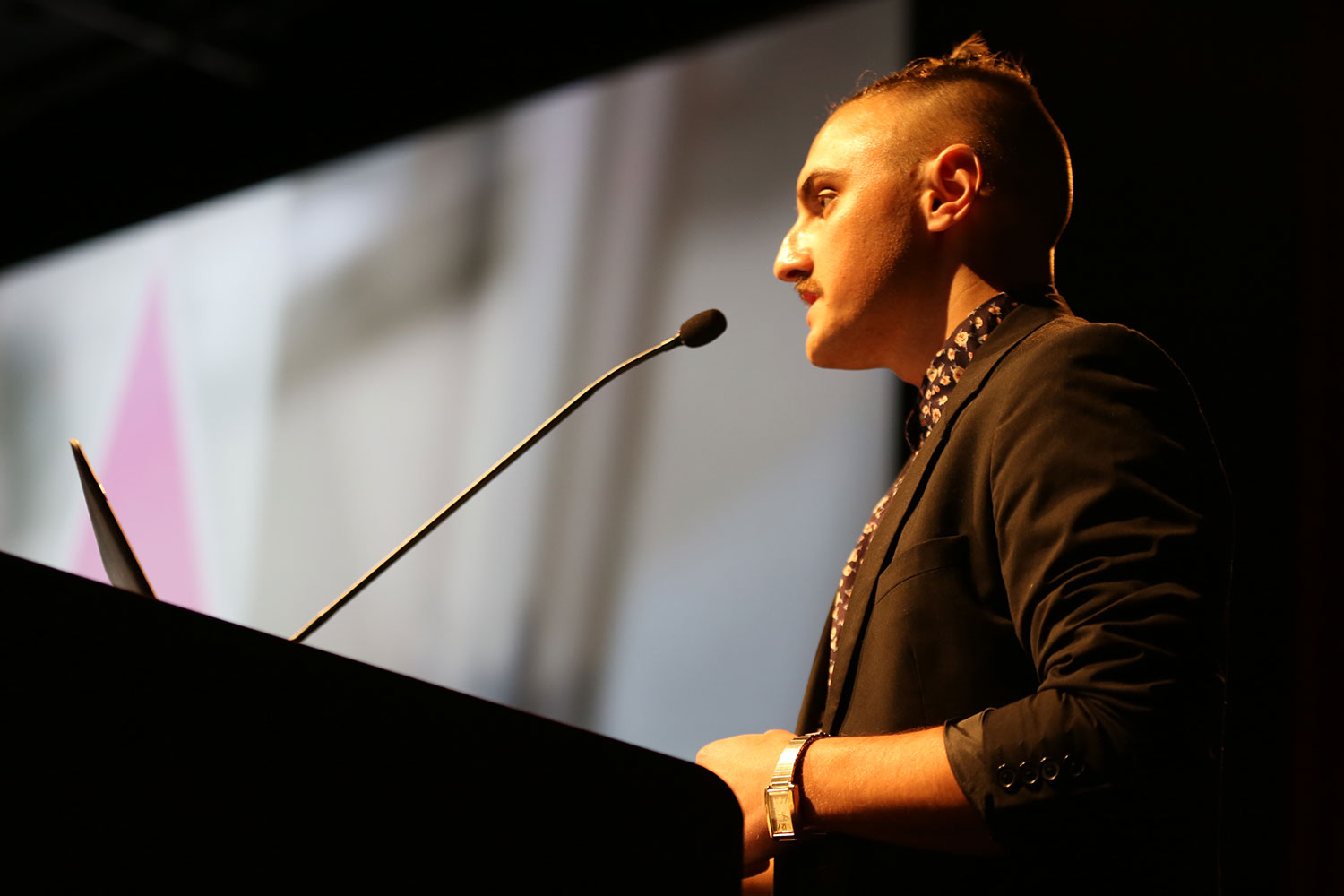
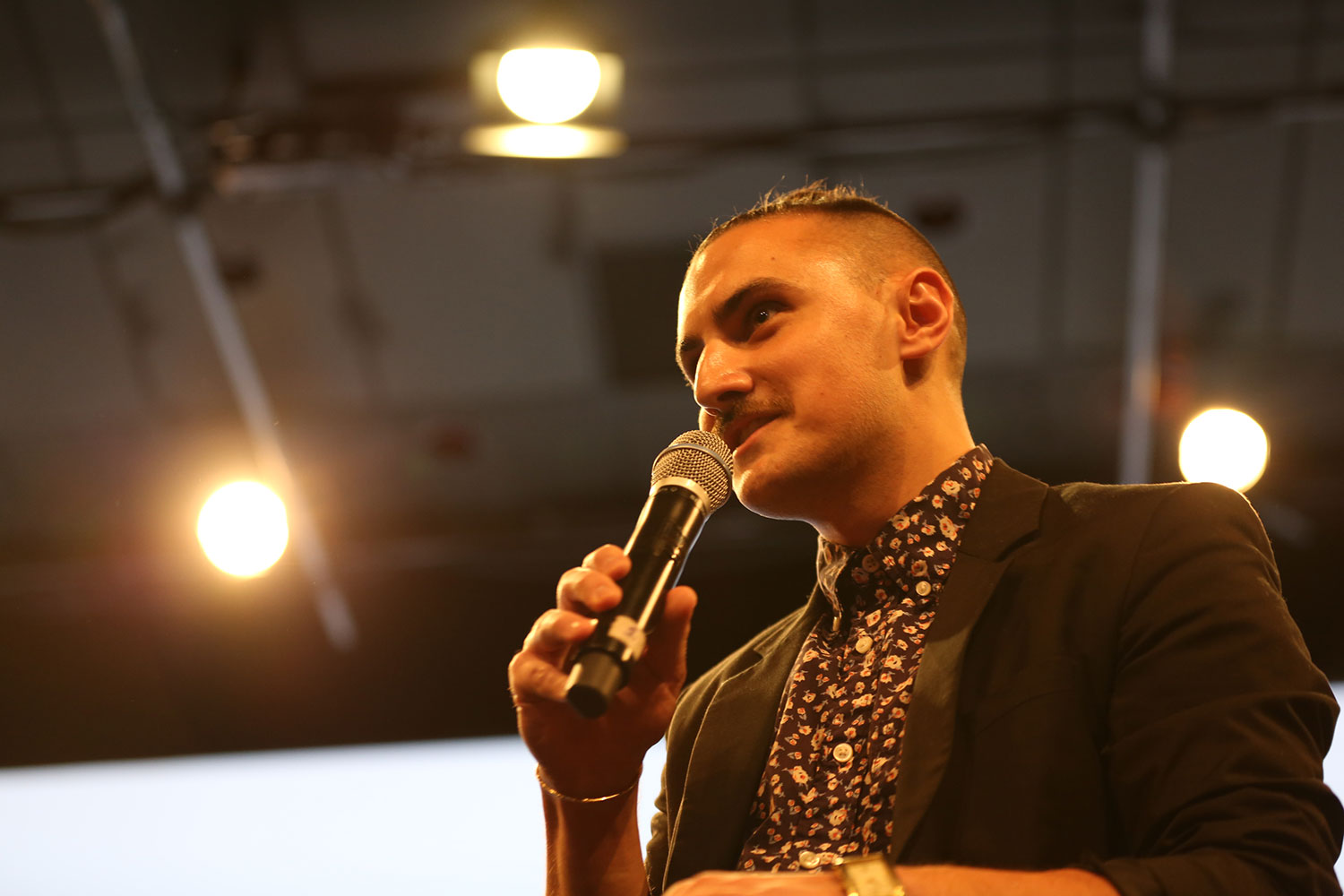
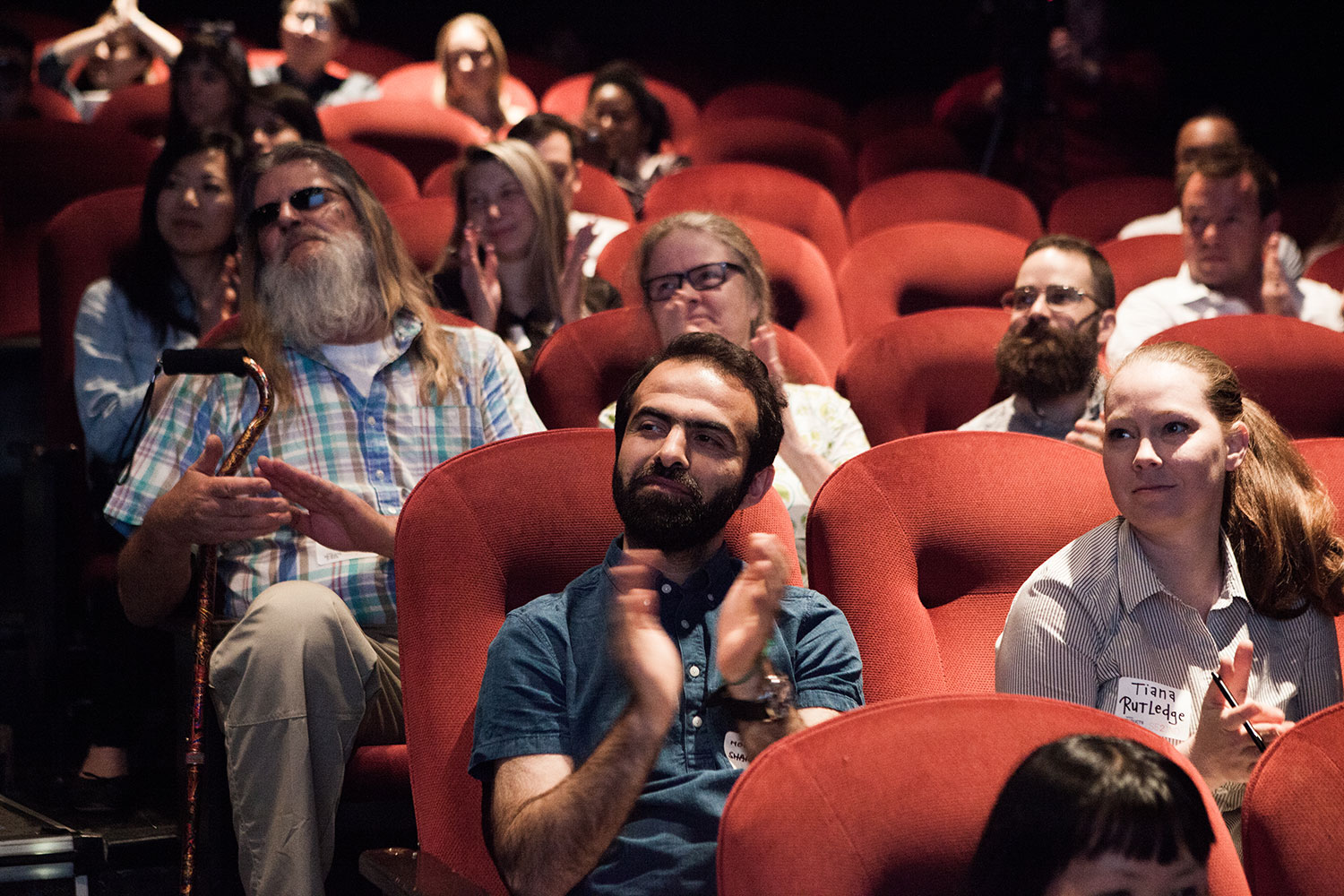
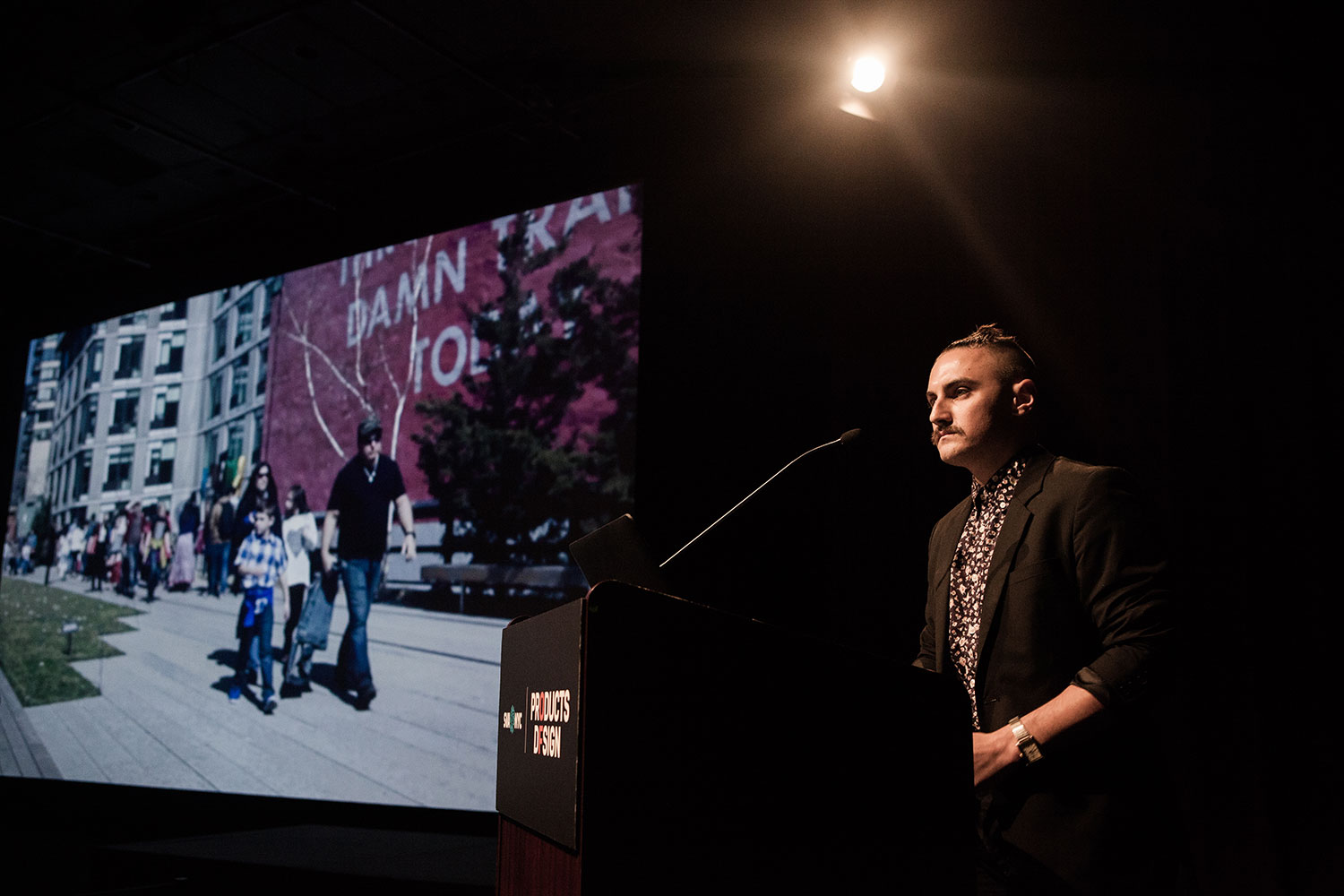
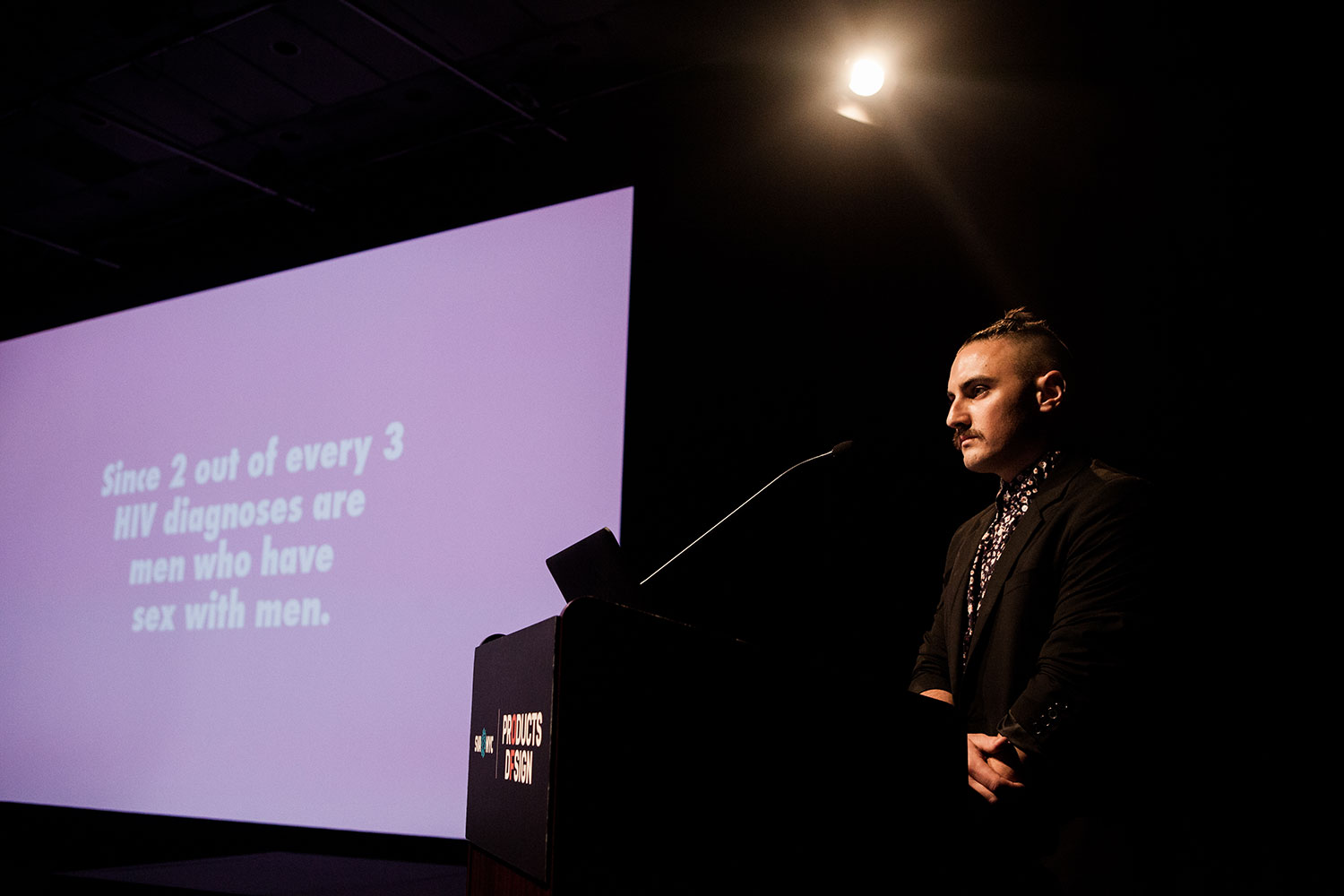
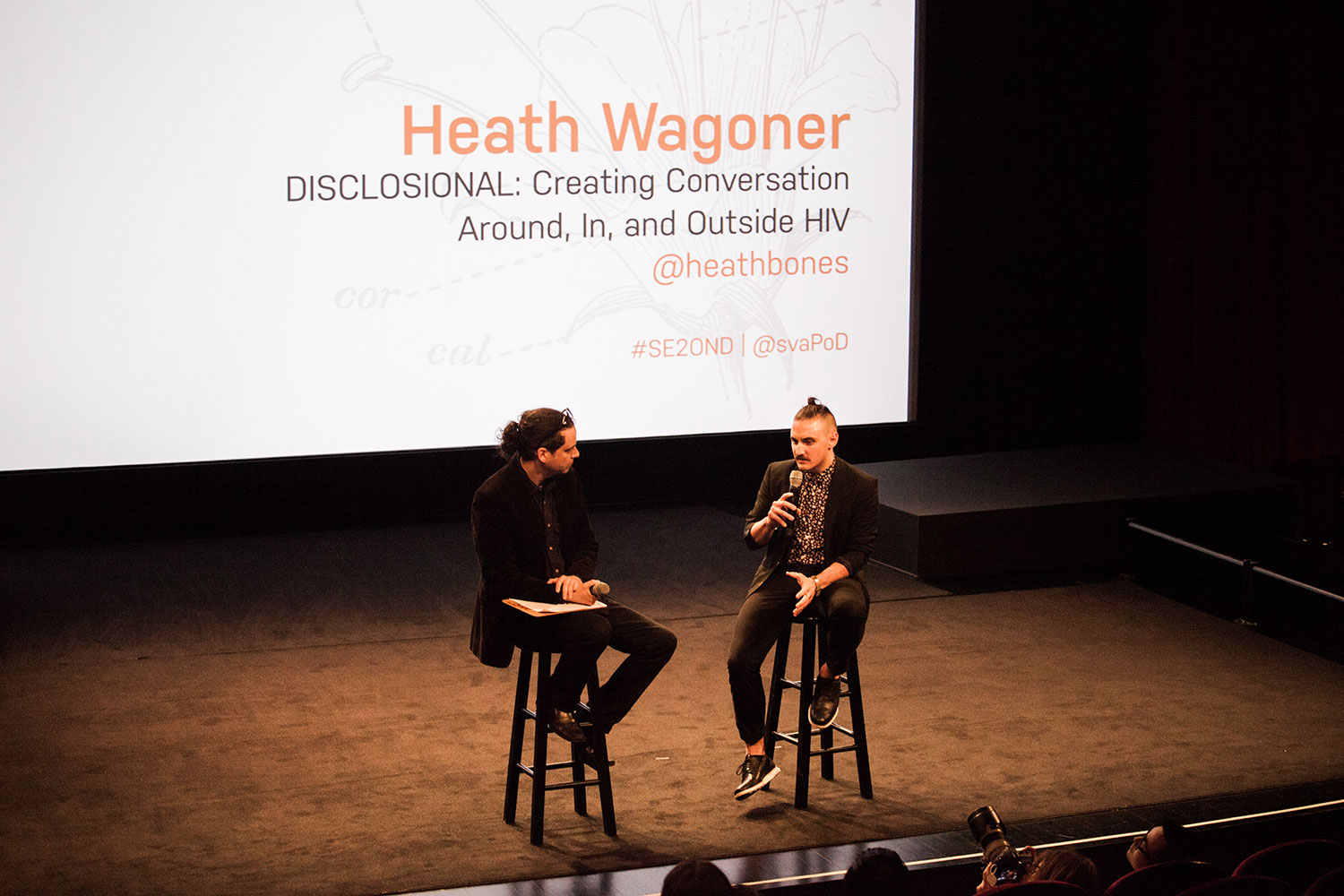
Heath’s weekly volunteering at LESHRC—an active needle exchange program—was the most influential part of his design process.
To illustrate how conversation can change one’s perspective on HIV, Heath made a short video:
Heath’s thesis began with volunteer work at the Lower East Side Harm Reduction Center (LESHRC)—an active needle exchange program. By interacting with people at the center, he was able to form bonds with the people who both worked at, and who relied on, the needle exchange. This gave Heath deep insights into what it takes to properly perform harm reduction.
From Needle Kiosk to Needle Kit
The first speculative product designed for the thesis was an interactive needle dispensing kiosk. But Heath quickly learned that the LESHRC’s most effective tool for education was human interaction, and that a digital needle exchange would take away the ability to communicate vital information about HIV.
The existing kits consisted of plain paper bags containing the harm reduction tools, along with wordy pamphlets stuffed inside.
One item in dire need of redesign was the harm reduction kits for condoms and needles. (Harm reduction refers to policies, programs, and practices that aim to reduce the harms associated with the use of psychoactive drugs in people unable or unwilling to stop.) Here, the defining features are the focus on the prevention of harm—rather than on the prevention of drug use itself—and the focus on people who continue to use drugs. At the time Heath began, the kits consisted of plain paper bags containing the harm reduction tools, along with wordy pamphlets stuffed inside. The problem Heath identified was that LESHRC serves a Latino and African American population in a Chinese neighborhood. The pamphlets were in English, and utilized few graphics. In addition, Heath argued, "paper bags also do not always serve as objects of discretion."
Heath redesigned the kit, first by creating approachable-style illustrations that communicated the required information and identified the essential elements. These initial kits were designed to replace two of the different harm reduction kits distributed at the LESHRC—one for condoms, and the other for syringes. The design made it easy for people of various backgrounds and languages to understand the purpose of the kit. The form factor was reduced to the scale of an “intimate object,” Heath reasoned, "so that it could be easily hidden from police; participants could remain safe, while practicing health safety."
The HiV Platform
It was during his time at the LESHRC Heath decided to commit to the pursuit of a thesis aimed at preventing HIV in the men who have sex with men (MSM) community. He saw that there were challenges in both the lack in the treatment of HIV Positive men, and in the stigma that surrounds HIV. Given contemporary culture’s affection for smartphones, Heath saw a digital platform as the perfect opportunity to foster communication and support between HIV positive men. Heath took Southern slang and created a brand called HiV (pronounced "high-five"). In the South, high five is often used as a derogatory term to describe someone who is HIV positive—“He has high five” or “He might give you high five” are expressions one might hear. The HiV platform uses geo-location to connect men that have been HIV positive for 10 or more years with men that are newly-diagnosed HIV positive...together in a mentor-mentee program. (HiV will launch in the Fall of 2015 with the help of organizations such as Zago and ASCNCY. Beta testing will begin in select neighborhoods in NYC and then move to the West Coast.)
"Visual Aids provided me with your contact information because of your unique story, and I am sincerely hoping you will be willing to participate in the project."
Disclosional: The Experience
The experience of imagining a platform for disclosure prompted Heath to create a space where disclosure could happen in person, safely. Heath spent weeks designing different experiences that would prompt conversations about HIV from the public. With the help of Alex Fiahlo of Visual Aids, Heath crafted an email that he used to reach out to 20 different HIV positive artists:
My name is Heath Wagoner, I am currently a Masters Student at School of Visual Arts. I am working on a design experience called Disclosional. Visual Aids provided me with your contact information because of your unique story, and I am sincerely hoping you will be willing to participate in the project.
Disclosional is an experience open to the public that brings attention to disclosure of HIV. Attendees have the opportunity to listen to someone that is HIV Positive recount the events of the day they found out they were positive, via anonymous audio recordings that will be played during the experience. Disclosional is part of a body of work about fostering a community for HIV positive men, where disclosure becomes easier and stigma is eliminated. Disclosional seeks to create an environment where people who may or may not be immediately connected to HIV have the opportunity to enter that world and walk away with the insights to start new conversations about HIV. People will gain these insights from the stories of HIV positive men; I think that conversation is key in understand HIV.
If interested, I ask that you please record the array of emotions and events over the course of the day that you found out you were HIV positive, in the manner most comfortable for you / as best you can. This recording can be a recollection, or spoken in way of a conversation. We hope that through the process of your disclosing these personal responses, Disclosional will open a sensitive space for dialogue about the challenges faced and contributions made by individuals living with HIV.
You may use your computer or phone to record yourself. Your name will also be withheld if you request. Ideally, the recorded response will be 3-6 minutes. If willing and able, please provide the recording response by this coming Saturday. I'm happy to answer any questions you may have about the project. I thank you for your participation and I will be sure to inform you in the coming weeks of the event's time and location.
Thank you for your time.
Heath Wagoner
Four men replied with their stories. Heath used these stories to create Disclosional, a pop-up space for disclosure and education. The stories were featured as looped tracks on two portals, each featuring phone receivers that participants could listen in on.
While listening, participants could watch looped video of two silhouettes talking—providing a visual to make it easier to imagine conversations, settings, and reactions.
Nearby, an iPad featured the stories of children who had a parent who died of HIV, along with an object that correlated to the story they had told. Stories were collected from The Recollectors—a new website designed to tell the stories of children who grew up with HIV in their lives.
Finally Heath created a poster inspired by the Silence=Death poster of ACT UP in the 1980s. The poster still protests against silence, and although HIV no longer causes a certain death, it now equals a life of medication and doctors visits.
Learn more about Heath Wagoner’s work at heathwagoner.com and contact him at hwagoner@sva.edu.
















